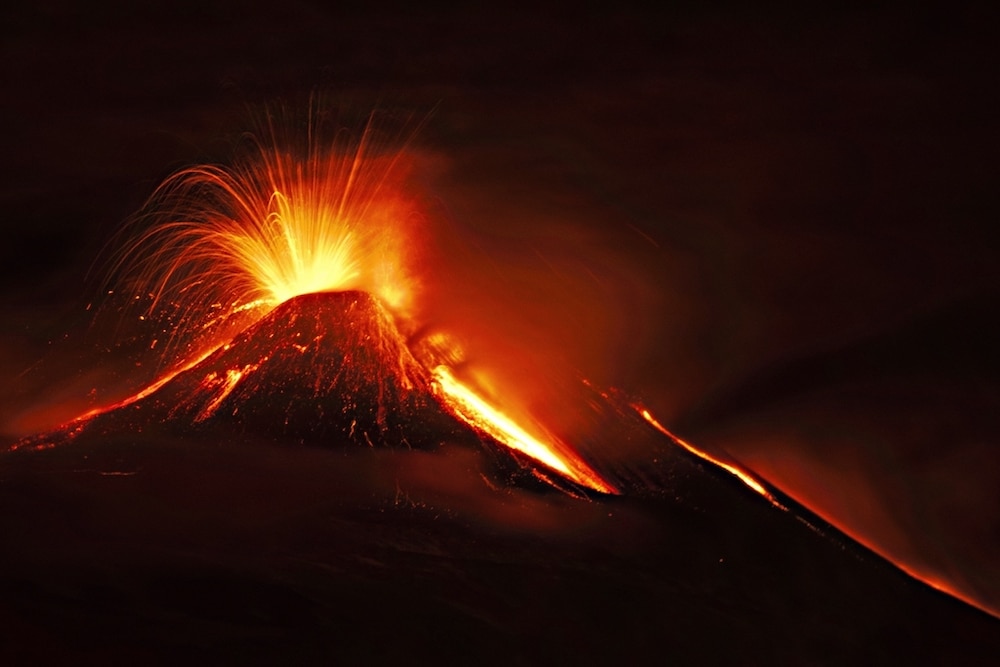Create a free profile to get unlimited access to exclusive videos, sweepstakes, and more!
The Sun and Moon could be unleashing earthquakes and volcanoes
What causes plate tectonics might not be what you think.

What causes lava to gush from volcanoes in plumes of liquid fire or the ground to shake like the world is ending? Plate tectonics. What causes plate tectonics? Not so fast.
Until now, the answer was thought to be unrest in Earth’s mantle. Under intense heat and pressure, superheated magma rises in what are known as convection currents, pushing the tectonic plates of the crust above. The problem is that even some diehard supporters of the convection current hypothesis have doubts that the influence of convection currents is strong enough to cause some literal Earth-shaking phenomena. So what is?
Gravity might be it. Geophysicist Anne Hofmeister of Washington University in St. Louis, who led a study recently published in Journal of the Geological Society of America, proposes that gravitational pull between the Earth, Sun, and Moon may cause imbalances that lead to the shifting of tectonic plates. The Sun pulls on the Moon with so much force that it creates an elongated lunar orbit which causes all sorts of problems for Earth’s fragile lithosphere.
“Available data do not support the convection model,” Hofmeister told SYFY WIRE. “Among other things, the heat source is insufficient, rocks require huge forces to deform, thermal plumes do not exist, and convection only affects fluids, not solids.”
How the Moon’s orbit accelerates is at odds with the way the Sun — a body tens of millions of times more massive — pulls at it. Lunar orbital acceleration and solar pull are supposed to balance at the barycenter between Earth and the Moon. The barycenter is the center of mass between them. Though it is usually right between objects of a similar size, Earth’s larger mass means that the Earth-Moon barycenter is closer to us (it has been moving closer for billions of years). At about 2,860 miles from our planet’s core, it is not directly between us and the Moon.
The only place where the acceleration of the Moon’s orbit and the persistent pull of the Sun are balanced is the barycenter. Unfortunately, that’s out in space. Anywhere else, these forces are imbalanced, and the Earth’s crust and solid upper mantle, which together make up the lithosphere, can’t take it. Tectonic plates become unstable and break. They slide, crash and subduct, often with catastrophic results on the surface. from volcanoes that belch flames to earthquakes, which are hazardous enough but often also cause mudslides and tsunamis.
“The geocenter bobbles about the orbital plane of the barycenter, so force directions are not aligned,” said Hofmeister. “Earth’s spin is also important to plate motions, giving the east-to-west character, which has been shown with seismic data. Convection cannot produce this.”
Pluto may actually be a mirror for what occurs on Earth. Because it is too small for the turmoil of convection currents to be bubbling up on the inside, that gets ruled out, but it has plate tectonics. The demoted planet’s moon is also large relative to its size, much like Earth’s, and its surface is not nearly as ancient as many of the objects in the Kuiper belt, which lies beyond it. To further test her hypothesis, Hofmeister wants to analyze its orbital dynamics and time dependence to see how they compare to those of the Earth, Sun, and Moon.
“Heat-emitting elements are mostly in Earth’s crust, so how the mantle could be heated has been a long-standing question,” she said. “Fifty years of convection modeling have failed to explain any of our observations.”


























